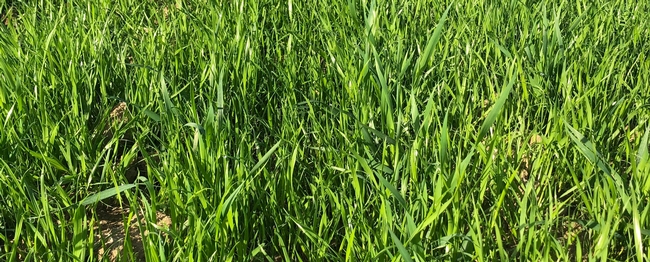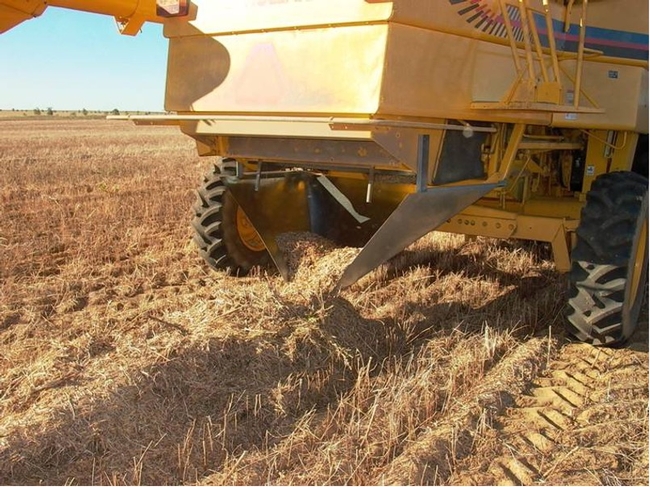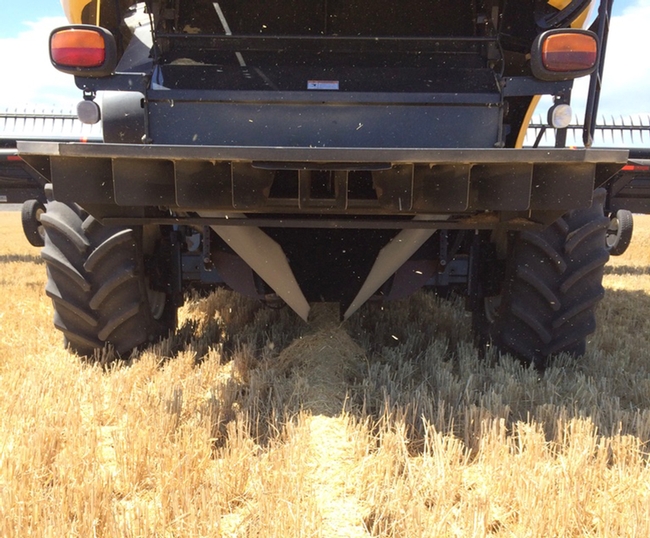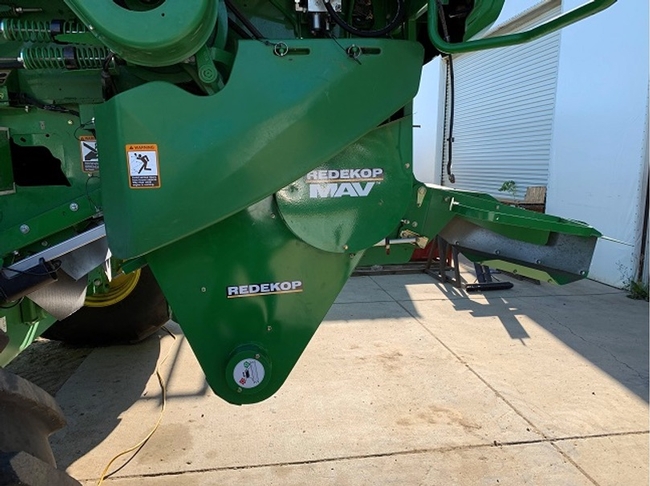Concerns about a growing resistance to herbicides

Dependence on herbicides alone in these systems has resulted in weeds with resistance to multiple modes of action. In Australia, there is one documented population of rigid ryegrass (Lolium rigidum) that is resistant to 15 different herbicides, covering seven different modes of action. Italian ryegrass (Lolium multiflorum), an annual winter species commonly found in small grain production systems in California is also notorious for its ability to develop resistance to entire groups of herbicides. One population collected in California orchards has resistance to four modes of action[1], but this population is not yet widespread.
One advantage is that California is still a long way from Australia in terms of herbicide resistance in our small grain cropping systems. We can look to Australia for 20 years of methods and data that have arisen in an effort to combat herbicide-resistant weeds. And, if we can find a way to slow the spread of herbicide resistance, we may be able to continue relying on some of the herbicides that are available in our area.
What is Harvest Weed Seed Control?
When growers need to manage herbicide-resistant populations of weeds without tillage, one strategy is to reduce the amount of seed returned to the seedbank by destroying, or removing weed seed caught during harvest operations. Collectively these strategies are referred to as Harvest Weed Seed Control (HWSC). These methods have long been studied in Australia. Researchers at Washington State University[2], Virginia, Texas, and other parts of the US have been looking into these methods for several years. With increasing herbicide resistance developing in Italian ryegrass populations in California, similar approaches may be worth exploring in the Sacramento Valley.
HWSC methods include several different strategies. Each have their own constraints and challenges, and all are designed to physically destroy seeds during or after small grain harvest. This prevents new seeds from entering the seedbank, including those that are from plants partially or fully resistant to herbicides used in the field. This reduces the rate of resistance development and the spread of resistant genes.


Direct Baling – Collecting straw and chaff immediately into bales, usually using a tow-along baler behind the combine. After harvest, bales can be moved off the field, thereby removing a large proportion of weed seed before it can disperse into the soil. However, removal of this much biomass can be problematic for growers with low organic matter soils that otherwise benefit from maintaining residues on the ground.

Limitations and project work
The caveat to all of this is that in order for HWSC to be effective, fields need to be harvested before weed seeds shatter (falling from the plant to the ground). As of yet the shatter patterns of Italian ryegrass in California are not well known. Additionally, previous research has indicated that Italian ryegrass seed retention at small grains harvest can be highly variable across different locations. For example, researchers from the inland Pacific Northwest have reported Italian ryegrass seed retention rates at harvest of 27-50% whereas a 58% of seed retention has been found in Australia. Furthermore, grains in California are planted at different times of the year and our harvest season occurs at different times of the year relative to Australia (not to mention the Pacific Northwest).
Shatter patterns might well be the same as those in other areas of the world but calling for a full scale HWSC revolution isn't very useful unless we know that a good amount of the weed seed has not yet shattered in the field when small grain crops are harvested.
In an effort to address this, UC researchers will begin collecting data on the shatter status of Italian ryegrass populations in several areas of the Sacramento Valley leading up to harvest. If we consistently see that a significant portion of the Italian ryegrass seed remains attached to the plant at harvest, then HWSC strategies may offer viable control options for California. Conversely, if ryegrass seed has largely shattered by the time our grain crops are harvested, then California growers may need to consider other options for control.
Of course, the best control strategies for herbicide-resistant weeds still include a mixture of different tools such as: the use of herbicides with different modes of action (including pre-emergent and post-emergent types where possible), the use of diversified crop rotations, and well-timed mechanical control. However, a better understanding of the potential for HWSC in California may give growers an edge in reducing the spread of herbicide resistance.
If growers in Sacramento, Solano, or Yolo County are interested in collaborating with UC Cooperative Extension Agronomists in trials focusing on control of Italian ryegrass in small grain crops or have related questions, please reach out to Konrad Mathesius (kpmathesius@ucanr.edu).
[1] : ACCase inhibitors, ALS inhibitors (imazamox, mesosulfuron), PS1 inhibitors (paraquat), and EPSP synthase inhibitors (glyphosate)
[2] My thanks to Dr. Ian Burke and Prof. Drew Lyon of WSU for sharing their research and insight regarding HWSC of Italian Ryegrass and other troublesome weed species.